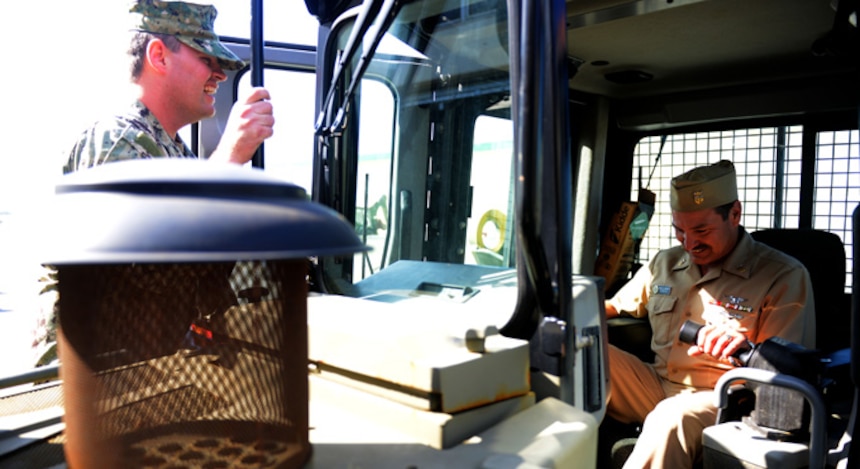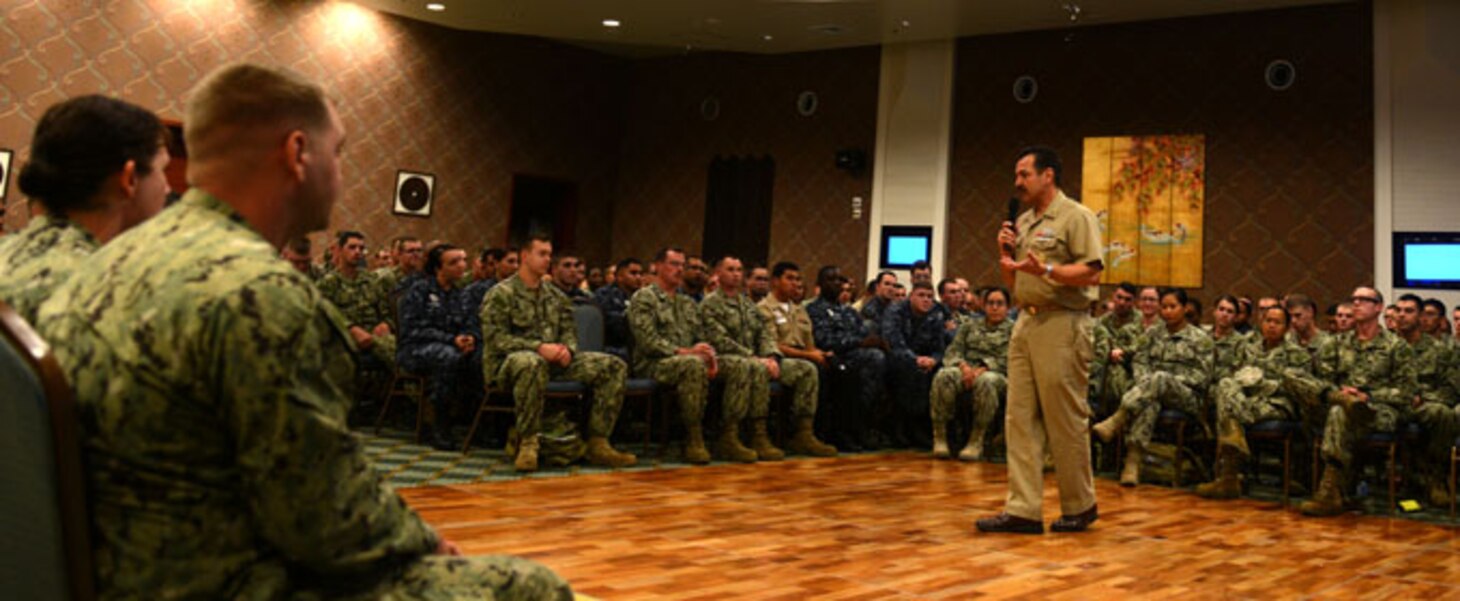U.S. PACFLT Master Chief Visits NMCB 3
By Seabee Magazine, / Published Nov. 22, 2013
Story and photos by MC1 Chris Fahey, NMCB 3 Public Affairs
U.S. Pacific Fleet Master Chief Marco Ramirez, right, listens to CM1 Jeremy Harris on how to operate a D6T dozer during a tour of Naval Mobile Construction Battalion (NMCB) 3 s Alfa yard at Camp Shields.
U.S. Pacific Fleet Master Chief Marco Ramirez met with Seabees assigned to Naval Mobile Construction Battalion 3, Nov. 20, during a visit to Camp Shields, Okinawa, Japan.
Ramirez, the 16th fleet master chief for U.S. Pacific Fleet, answered questions while addressing NMCB 3 Seabees to help share Commander, U.S. Pacific Fleet Adm. Harry B. Harris vision, guiding principles, and strategic imperatives.
When you think of the Seabees, you automatically think of the Pacific, said Ramirez. People see the Seabees, and they bow to them. Seabees visit so many different countries and build friendships with so many different nations. These friendships are so important. They enhance our ability to stay in the Pacific. When these nations think back, they don t remember the ships that passed through. They remember that Seabees came and built a school, a community center, a typhoon shelter or got the water going. So, when they think of the Seabees, they also think of the United States of America, the U.S. Navy and that Seabees Can Do. It instills our presence to remain here as friends and allies.

131120-N-VN372-002 OKINAWA, Japan – (Nov. 20, 2013) U.S. Pacific Fleet Master Chief Marco Ramirez answers questions while addressing Seabees from Naval Mobile Construction Battalion (NMCB) 3 during a visit to Camp Shields, Wednesday. The trip was designed to help share Commander, U.S. Pacific Fleet Adm. Harry B. Harris’ vision, guiding principles, and strategic imperatives. One of the first battalions commissioned during World War II, NMCB 3’s legacy stands strong in its ability to build and fight anywhere in the world as either a full battalion or as a group of autonomous detachments, simultaneously completing critical engineering and construction missions. For this deployment, NMCB 3 has split into nine details to perform critical construction projects in remote island areas such as Timor-Leste, Tonga, Cambodia and the Philippines. The teams will also conduct operations in Atsugi, Yokosuka and Okinawa, Japan; Chinhae, Republic of Korea and China Lake, Calif. The Naval Construction Force is a vital component of the U.S. Maritime Strategy. (U.S. Navy photo by Mass Communication Specialist 1st Class Chris Fahey/RELEASED).


